Geghard. I've never been able to pronounce this name in a proper manner. When I read it on the travel program, before leaving for Armenia, I forgot about it a few seconds later, and I guess I stored it somewhere as one of the many complicated names of local monasteries.
I wasn’t able to recognize this toponym when our guide mentioned it: Armenian is a language that is very different from Italian, there are sounds that do not exist in my language, and even graphically it's difficult: most of the time it's about connecting an unknown sound with an unknown letter. Pretty hard task.
So the poor Geghard has always been relegated to the bottom of my thoughts, even if the high-class definition of "Unesco heritage" that usually accompanies it, earned a lot of points.
After visiting this place, however, things have changed. It is one of the most beautiful monasteries I have ever seen, and I do not think I will ever forget it.
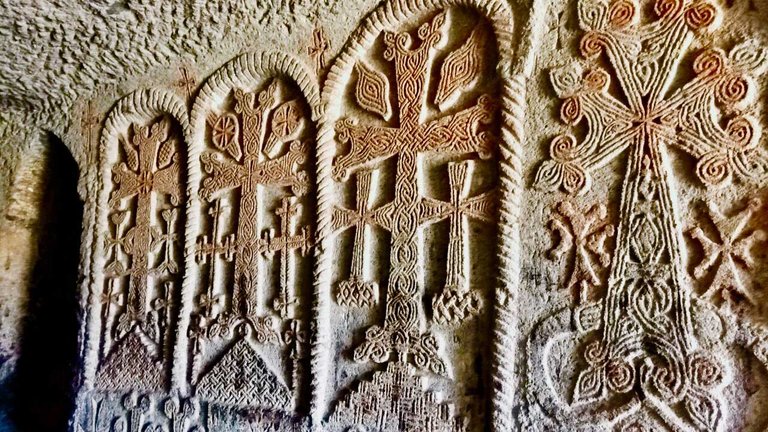
THE ROAD TO THE MONASTERY
The day started well: after long hours of rain, fog, snow and cold temperatures - which I was not absolutely prepared for - it finally got a bit hot.
I wake up in the hotel in Yerevan with the sun in my face and early in the morning with the faithful minibus we head towards our destination, in the province of Kotayk, central Armenia. The road to Geghard passes near Garni with its pagan temple (if you want to know more there is an article here) that we saw in the early part of the morning. After an excellent lunch, accompanied by the traditional Lavash bread baked in the traditional oven and washed down by an exquisite pomegranate wine, happy and full we get to the area underneath the entrance. There’s a breathtaking view: gullies and bare mountains overhang us. In the center, the towers of the complex stand out.
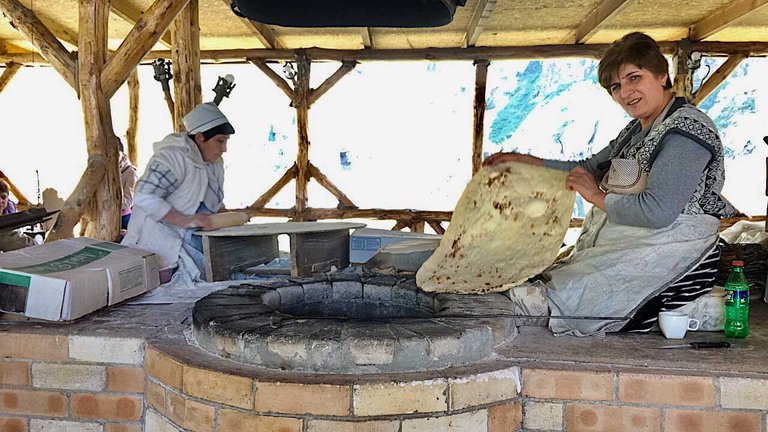
We parked in a large square animated by a dozen stalls selling typical products. The traditional dessert filled with egg cream,the sweet bread, simple but supergood. There are threads of walnuts sewn one another and covered with sweet must which look almost like ornaments for some late Christmas tree. There are also glazed ceramic pomegranates, omnipresent symbols of fertility and prosperity.
Salespeople push each other to attract the attention of the patrons every time a bus, big or small does not matter, downloads its human content. There is a certain movement, perhaps too much, so I start heading towards the uphill road that leads to the monastery, following the guide Shushanik who stops to greet a couple of colleagues, each at the head of a group of tourists.
After a hairpin bend that hides the entrance to the site and the entrance gate into the fortified walls, Geghard finally appears. The spectacle that stands before my eyes is fantastic: it is as if the structure of the monastery came straight from the rock, from the mountain ...
A part of the complex is in fact built in the living stone, and entering it is a truly mystical experience.
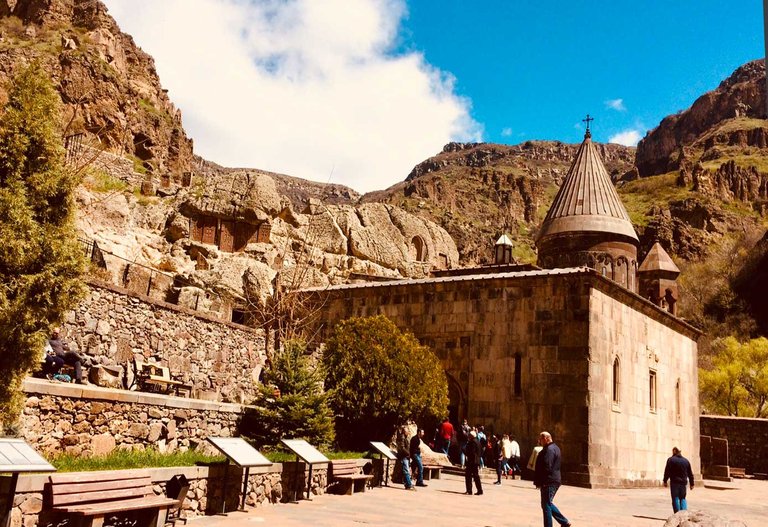
THE VISIT
Geghard, inscribed among the Unesco monuments, takes his name from the spear that pierced Jesus' body on the cross, and which is said to have been kept right here, a very important relic for the Christian world. The spear is still visible today, but it is no longer in this place. It can be seen in the museum of Echmiadzin.
The construction of the complex began in the fourth century by Saint Gregory the Illuminator, who baptized the Royal family in 301 and who imported Christianity into Armenia before it was adopted in Rome. St. Gregory began construction by a small chapel, just above a spring whose waters known for a long, long time and - it is said - had the power to heal from diseases. So this was a sacred spot long before Geghard.
The spring still lives, with its miraculous water, and I have not resisted drinking a few sips.
However, the primordial monastery was destroyed by the Arabs in the ninth century.
Since its foundation, the complex has greatly expanded and was completed in the 13th century. Almost a thousand years to give life to sort of alive organism, which has never stopped functioning fully (that is why it has been preserved as well as it appears today). From a center of worship to a center of studies, always a comings and goings of ecclesiastics, pilgrims, scholars, nobles.
The medieval project was to sculpt everything in the rock, but the idea was abandoned after a partial realization of the works (perhaps it was overly complicated).
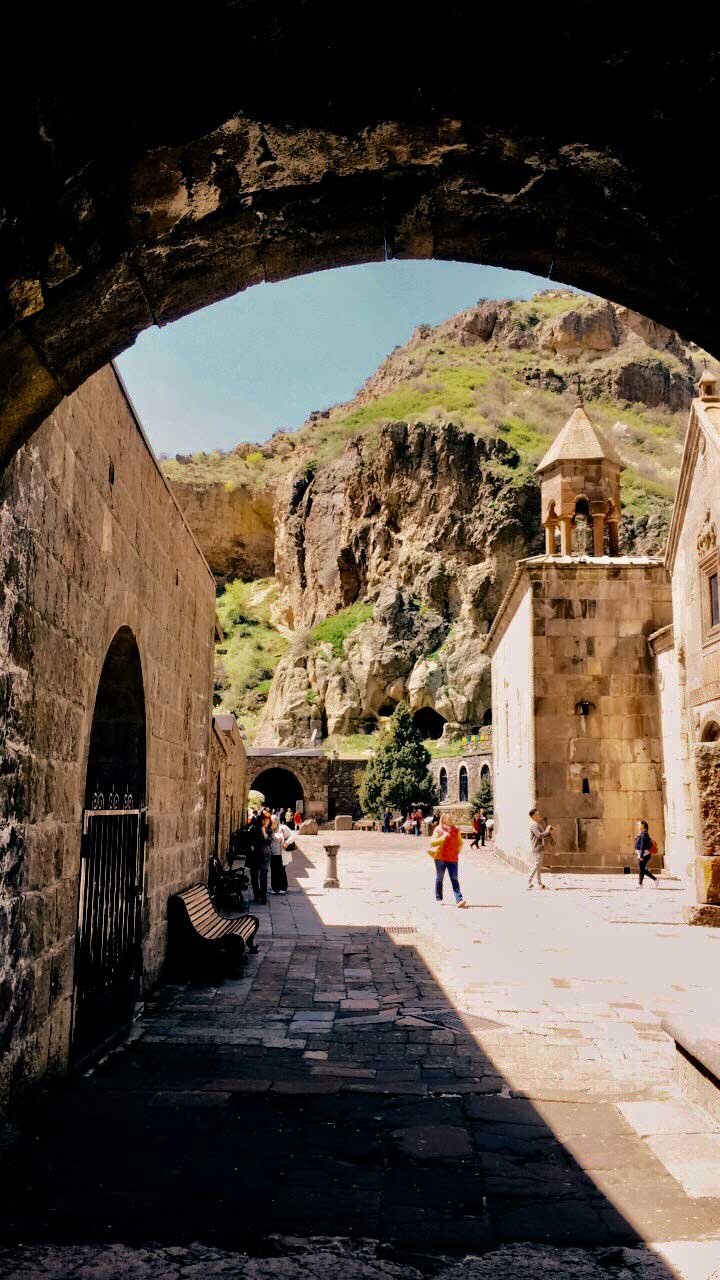
THE FEELING
The carved part that still remains today, especially the highest one that looks at the mountain closely and takes the name of Jhamatun, is absolutely not to be missed. Entering here is like, in a sense, entering a womb. That of the earth, perhaps. A low corridor, which narrows slightly before reopening for the entrance to the chapel, is decorated with bas-relief stone crosses that seem to be embroidered in the rock. There is a very strong energy, and touching the walls, which are still the walls of the mountain, transmits almost an electric shock.
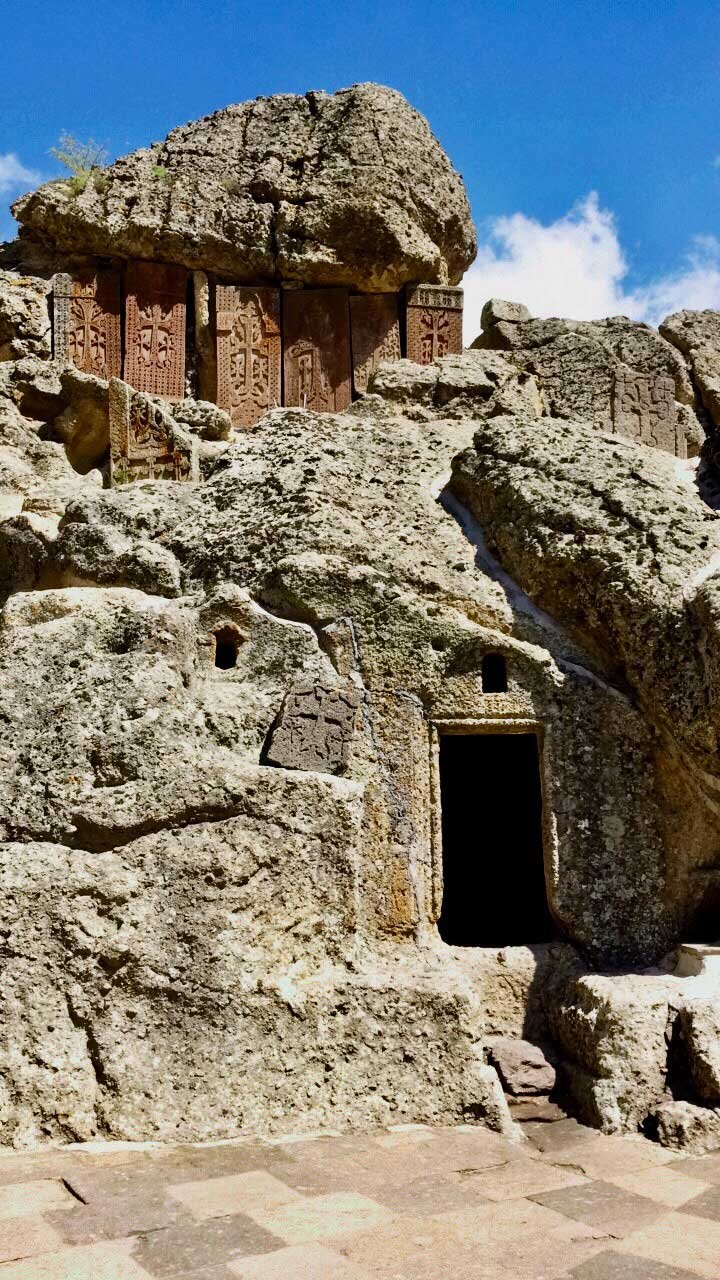
Here the acoustics are excellent, and it is not uncommon that concerts are performed in this part of the monastery. When I entered, the members of a choir were just going out, after singing. I could only hear a few seconds of their performance because we were on the opposite side listening to Shushanik's explanations. I was a bit disappointed to have lost the experience, but at least I could visit the cave more easily.
On the floor there is a hole that allows you to see what happens in the rooms below, curious! When I looked through it, I only saw the bald head of an unsuspecting gentleman standing a few feet below, in the Katoghike Chapel, which is no less beautiful.
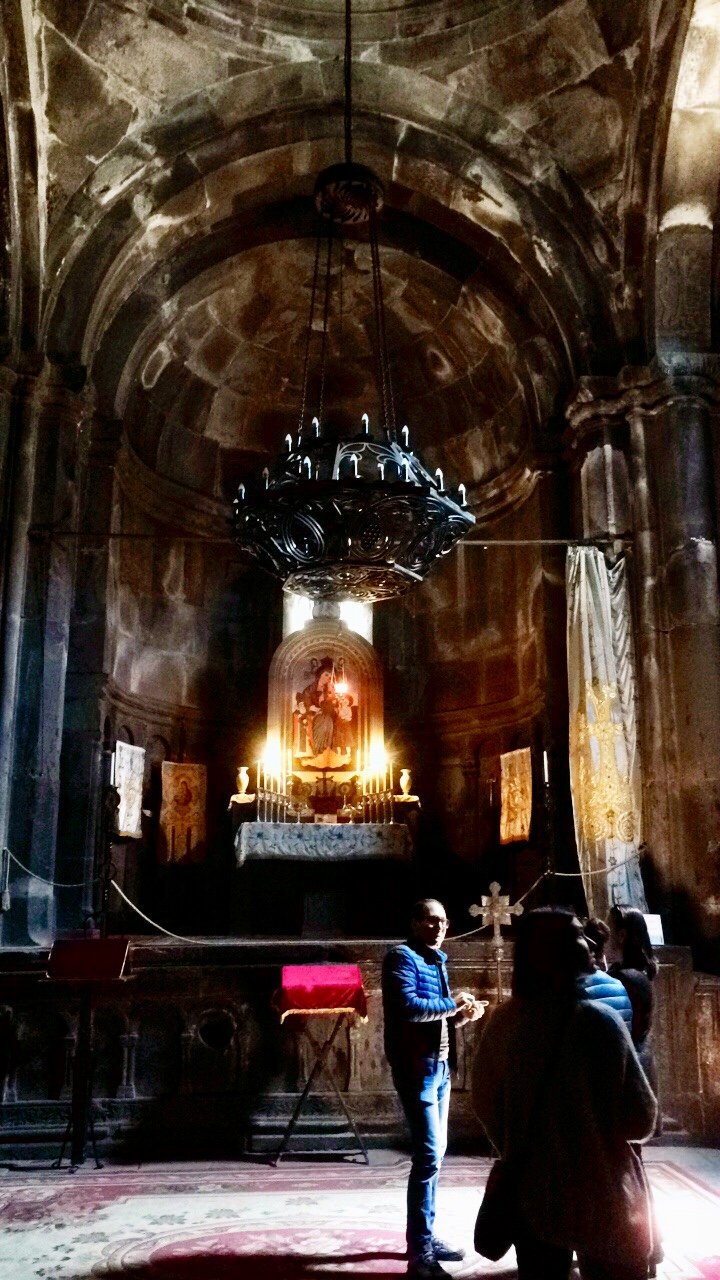
Everything is dark, lit only by the light that peers from the openings at the top of the building and from the flames of the candles. Luckily it is a sunny day, and the rays come in from the outside creating reflections on the rock floor and dancing in the air, revealed by the corpuscles that float in the light. It is definitely an otherworldly place. You want to stay longer just to enjoy this feeling.

Unfortunately, the time available is not much, and it would take hours to see everything carefully and photograph the tombs of the princes, the stone crosses, the carved domes, the symbols, all the intricate motifs signed in the rock. On the other side of the entrance door there is a river that flows flickering, a bridge that crosses it, and a nice walk to do, it seems. But Shushanik calls us to collect …It will be for the next time.
Congratulations! Your high quality travel content caught our attention and earned you a reward, in form of an upvote and resteem. Your work really stands out. Your article now has a chance to get curated and featured under the appropriate daily topic of our Travelfeed blog. Thank you for using #travelfeed
amazing, it's sure a witness of a lot of happenings before.nice post, feels like i am a bit there too because of the information you shared here.☺️
Congratulations! this post got an upvote by @steemrepo and was manually picked by the curator @for91days to be added on STEEM REPOSITORY, simply comment "YES" and we upload it on STEEM REPO Website.
Want to know more about the Steem Repo project? Contact us on Discord
Congratulations, your post was discovered and featured by @OCD in its daily compilation 257!
You can follow @ocd – learn more about the project and see other Gems! We strive for transparency.
If you would like your posts to be resteemed by @ocd to reach a bigger audience, use the tag #ocd-resteem. You can read about it here.
@ocd now has a witness. You can vote for @ocd-witness with SteemConnect or on Steemit Witnesses to help support other undervalued authors!